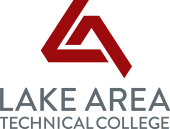Write, Edit and, Publish
Which Should I Use?
There are many ways to get things done, and while there are similarities in software tools, they’re still not all the same. So which should you choose? It really depends on your preferences. With open-source software and freeware, it’s easy to download and try programs out. In some cases, the department in which you’re studying may require a certain program. Or you may feel comfortable with industry standards, such as the Microsoft Office suite of applications.
On this page, we’ve chosen some popular tools to get you started, but there are more available. If you have a program you particularly like, please let us know! We’d love to hear more.
Computer Software Suites
The iWork suite for Macintosh has three parts: Pages is its word processor, Keynote is for presentations, and Numbers works for spreadsheets. All three will read and write files that are compatible with their Microsoft counterparts. One advantage of using iWork tools is the ability to save files on the iCloud service and open them on iPads or iPhones using the iWork apps. Those apps are sold individually on the App Store. Apple offers a set of tutorials if you’re interested in learning more about creating and editing documents in iWork.
The Office suite is easily the dominant set of tools for creating documents on Windows and Macintosh computers, and has been for many years. Microsoft offers several different packaged versions of Office, but its core software includes Word, PowerPoint, Excel, and Outlook. Other apps include the Windows-only applications OneNote, Project, and Publisher. Install Office 365 on your PC or Mac, on tablets and smartphones for when you’re on the go, and on the web with Office Online for everywhere in between.
Open-source Software
Although the paid office suites hold the lion’s share of the productivity software market and there are educational discounts on these tools, you may find that you prefer an open-source software suite, which are free to download and use. All of these tools work on Windows, Macintosh, and Linux computers.
If you’re using Windows, Macintosh, or Linux, you can download and use LibreOffice for free. Not only can you use the word processing, presentation, and spreadsheet software included in the suite, but it also has a drawing program, a database, and an equation editor. LibreOffice is derived from OpenOffice.
Apache OpenOffice is the leading open-source office software suite for word processing, spreadsheets, presentations, graphics, databases and more. It is available in many languages and works on all common computers. It stores all your data in an international open standard format and can also read and write files from other common office software packages. It can be downloaded and used completely free of charge for any purpose.
How are LibreOffice and OpenOffice different? Not in many ways, according to Brian Mathew of Computer Technicians AU.
Cloud Office Suites
Using cloud services to complete your academic work can be very convenient, especially if you’re looking for a way to keep your documents portable. There’s no flash drive to keep track of, and it’s easy to share your work with your collaborators. Both Google Drive and Microsoft SkyDrive have desktop clients for Windows and Macintosh computers. They also work on Apple iOS and Google Android devices. Both are free services.
Google Drive allows you to create word processing documents, spreadsheets, forms, drawings, and presentations online. Although the Web-based tools aren’t as robust as the computer applications you’re probably used to, you can also upload work to save or share. Documents created in Google Drive can also use Google’s Web Fonts, if you’re looking for a differentiator.
If you prefer Word, PowerPoint, and Excel documents, you’re probably better off using Microsoft SkyDrive. Mac users who enjoy using the OneNote note-taking app can use the Web-based version here, too. Like Google Drive, SkyDrive gives you the option to share your work with your classmates. If you have a Microsoft Hotmail, Outlook, Windows Phone, or Xbox Live account holder, you may already have a SkyDrive account.
Editing
Just like a human reviewer, Ginger Proofreader corrects spelling and grammar mistakes based on the context of complete sentences by comparing each sentence to billions of similar sentences from the web.
Produced by a company called Literature and Latte, started out as a creative-writing tool, but is growing in popularity as a tool for academic writing.
Psychologist Daniel Wessel uses Scrivener for academic writing and recommends it in his blog.
Ryan Cordell looked at Scrivener in The Chronicle of Higher Education’s ProfHacker blog.



